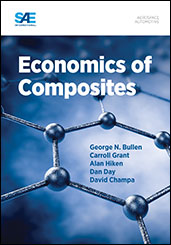Video

Tailored Conversion Coatings for Enhanced Adhesion to Metal
2012-03-21
As a result of recommendation from the Augustine Panel, the direction for Human Space Flight has been altered from the original plan referred to as Constellation. NASA's Human Exploration Framework Team (HEFT) proposes the use of a Shuttle Derived Heavy Lift Launch Vehicle (SDLV) and an Orion derived spacecraft (salvaged from Constellation) to support a new flexible direction for space exploration. The SDLV must be developed within an environment of a constrained budget and a preferred fast development schedule. Thus, it has been proposed to utilize existing assets from the Shuttle Program to speed development at a lower cost. These existing assets should not only include structures such as external tanks or solid rockets, but also the Flight Software which has traditionally been a ?long pole? in new development efforts. The avionics and software for the Space Shuttle was primarily developed in the 70's and considered state of the art for that time.

